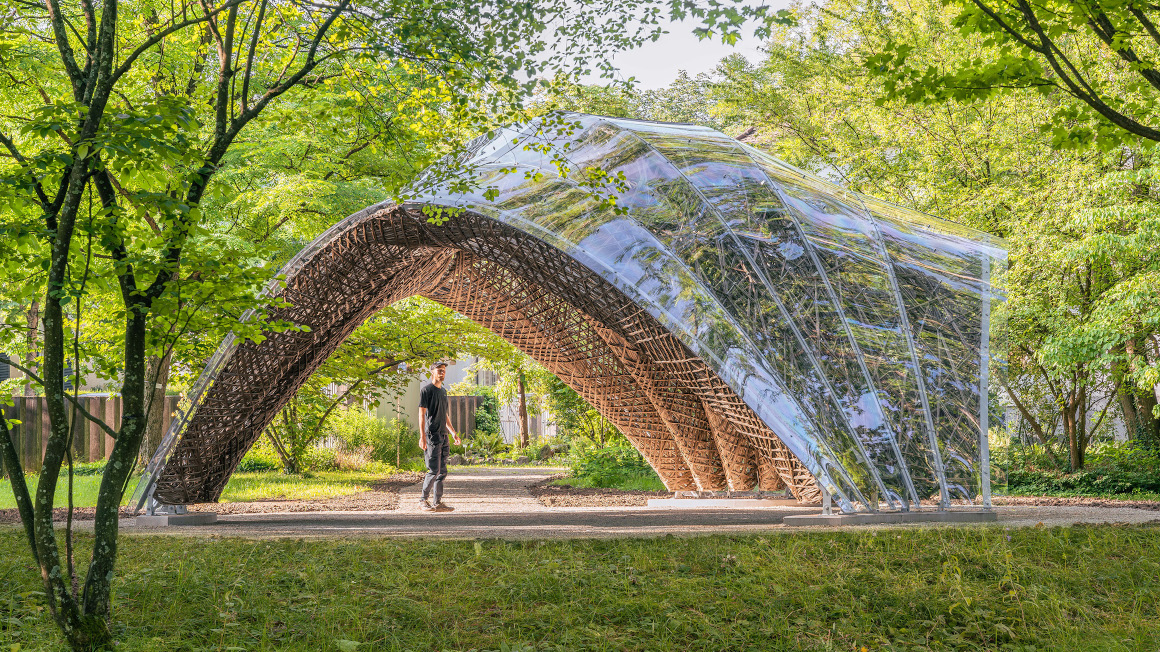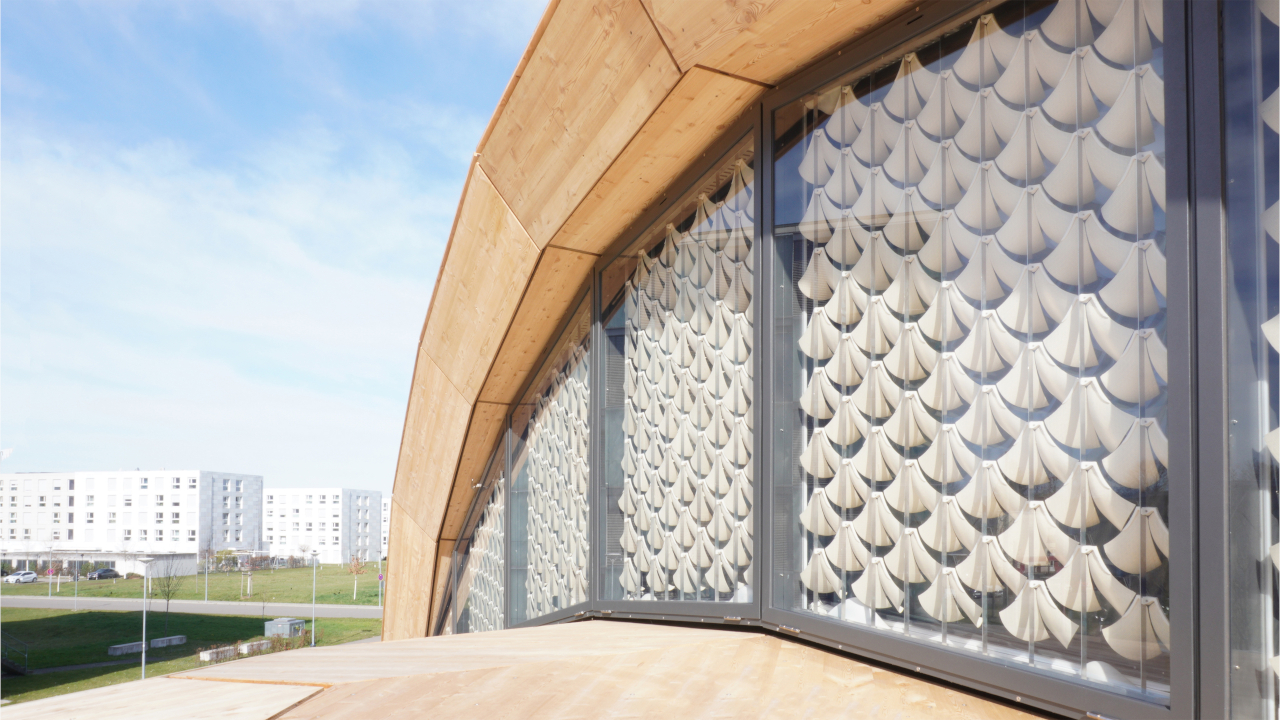Premiere for pavilion made of flax fibers
Inspired by nature and built with natural fibers: the pavilion in the Botanical Garden of the University of Freiburg shows what sustainable building can look like.

Almost 40% of global CO2 emissions can be attributed to the construction industry. The building sector in particular, where construction with cement still dominates, is responsible for the majority of greenhouse gases. But the industry is undergoing a transformation towards more sustainability. Visitors to the Botanical Garden at the University of Freiburg can now see for themselves how this can be done. Researchers from the universities of Freiburg and Stuttgart are presenting the livMatS pavilion here - a building constructed from flax fibers.
Resource-saving construction method
When choosing the natural building material, the researchers deliberately decided against wood, as this raw material only grows slowly compared to flax. Flax fibers are already used in other areas such as the automotive industry, however, according to the researchers, the pavilion in the Botanical Garden is the first structure to be built entirely from this fiber.
Cacti as inspiration for shape and structure
The researchers were inspired by cacti when it came to shape and structure. Understanding the structural and mechanical properties of the plant and implementing them in construction was a challenge, they said during the online presentation of the nature pavilion. In addition to using flax as a natural building material, the researchers were also able to save materials with the help of digital design and fabrication. Compared to building with solid wooden panels, material savings of 80% were possible.
The futuristic building is not only sustainable, but also functional. According to the researchers, the strength of the flax fiber is about one-third that of a carbon fiber. The load capacity is not a problem, they say, because almost any load-bearing capacity can be achieved by compacting the fibers. A plastic cover protects the pavilion. Although this weather protection is made of polycarbonate, it is single-grade and can be recycled and returned to the cycle without any problems.
Communicating research
The livMatS pavilion, a composition of natural building material, bio-inspired structure, and digital design and manufacturing, is an example of how sustainable building can succeed in the future. The pavilion's location in the Botanical Garden was deliberately chosen. In this way, the researchers want to make their work accessible to a broad public and promote communication. Events for visitors will soon be held under the roof of the bio-inspired building.
bb


